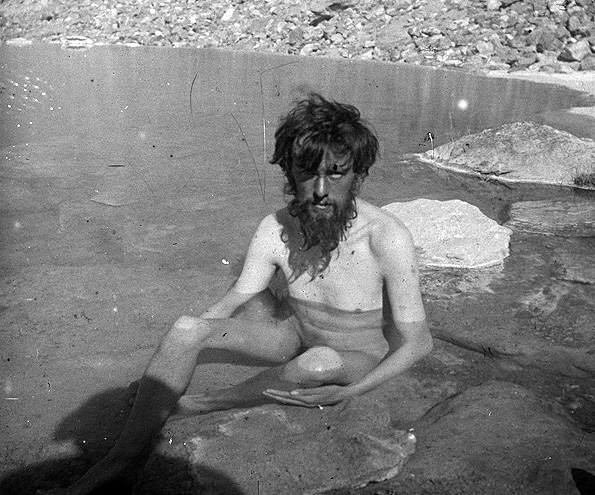The setting: London. In particular, Stepney, London E1. The year, a warm summer in 1974, July 21 to be exact. And a very early video camera, only able to shoot in black and white, records the events of the E1 Festival, a free day out for families, restless teens, and bell bottomed, long-haired youth enjoying the sun. There’s Indian musicians, face painting, carnival games, jazz bands, folk dancing, and a “Wellie Boot Chucking Competition”. You know, “the lot,” as the English would say. But then, around 40 minutes in, the videographer decides to shoot the pub rock band playing on the main stage.
If the bespectacled 19 year old looks and sounds a bit familiar, well luvvies, you’re not seeing things. This is the first filmed appearance of a young Elvis Costello, beclad in very fetching dungarees and fronting his first band Flip City. This was their third ever gig, according to the Elvis Costello fan site.
A full three years before Declan MacManus would change his name and burst upon the scene with My Aim Is True, here he is paying his dues.
Flip City was Costello’s second group, the first being a folk rock duo called Rusty that played John Prine, Jesse Winchester, and Van Morrison covers in between their own songs. After Costello split from Liverpool and left for London, he jumped on the pub rock bandwagon that was already formed around Nick Lowe, Dr. Feelgood, and Brinsley Schwarz, mixing up Americana and R’n’B covers with very British originals. They even recorded demos a few years after this gig, which were widely bootlegged until most of them appeared on bonus tracks on various CD reissues. (You can listen to them here.)
But back to 1974. We have no record of their full set, but the two songs on the video are from the Coasters’ “I’m a Hog for You” (the B‑side of “Charlie Brown” but covered by Screaming Lord Sutch in 1963) and from the Isley Brothers, “This Old Heart of Mine,” a Motown staple. Despite Costello’s encyclopediac knowledge of music, he never again played these two songs live again.
It might be 20/20 hindsight, but one can already hear the talent and the confidence (or at least mock confidence) that would soon propel the young man into the charts. The rest, as they say, is much better than winning the wellie chucking contest.
Related Content:
The Stunt That Got Elvis Costello Banned From Saturday Night Live (1977)
Elvis Costello Sings “Penny Lane” for Sir Paul McCartney at The White House
Ted Mills is a freelance writer on the arts who currently hosts the artist interview-based FunkZone Podcast and is the producer of KCRW’s Curious Coast. You can also follow him on Twitter at @tedmills, read his other arts writing at tedmills.com and/or watch his films here.


